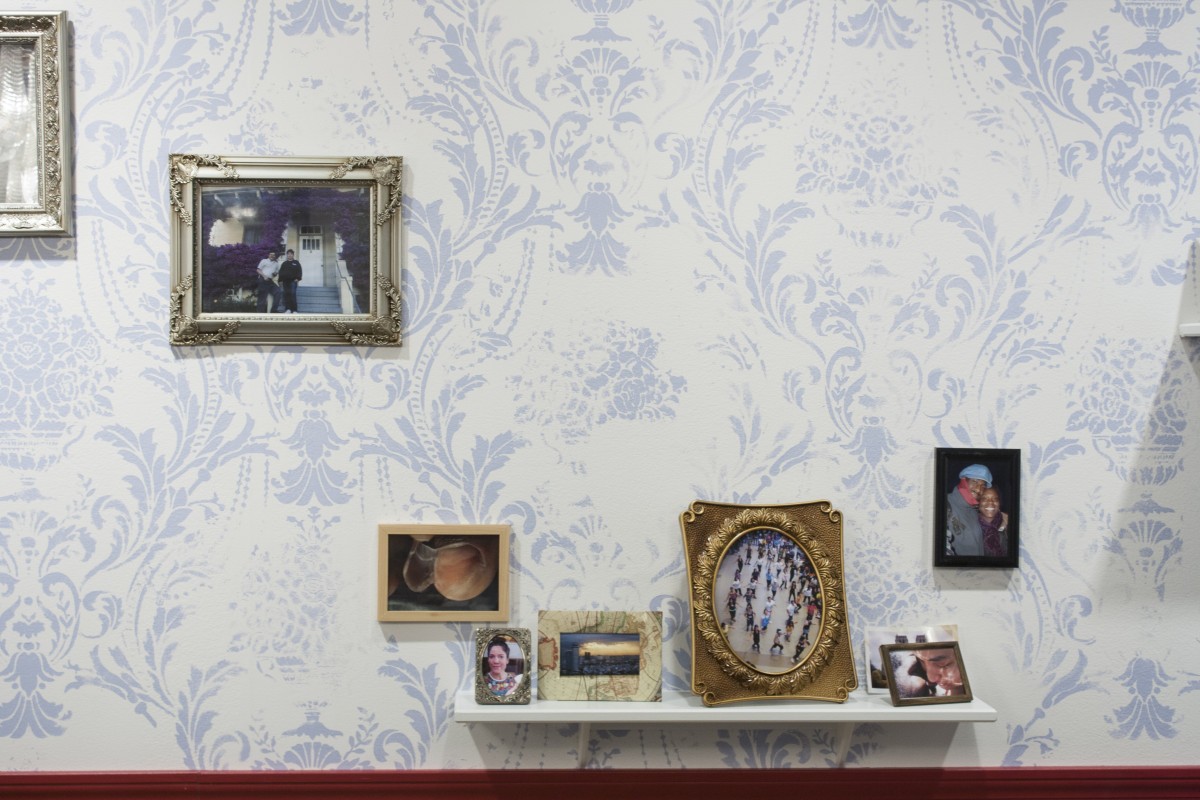
List Projects: Kambui Olujimi features A Life in Pictures, an interactive installation functioning as a social space where visitors are invited to exchange their own photos with selections from the artist’s photo archive. Courtney Klemens, the List’s Campus and Community Outreach Coordinator, talked to Olujimi about his exhibition, his working process, and personal engagement with his art.
Tell me about how A Life in Pictures came to be.
I felt that I was experiencing in my everyday life a move away from the tangible and tactile. I started to think about the countless images we capture daily and how they often are left idle in our various devices. With this in mind, I wanted to create a space where people could reconnect to past memories as well as exchange with strangers and friends alike. Photography is like an ether: we’re inundated with images all the time. It’s incomprehensible how many images—whether it’s logos or screens, advertising or print—they’re just everywhere. I thought it would be nice to work with photos, since we’re all documenting so much of the world around us. I hope to offer an alternative to the current disposability to those images.
Where did the photos in your archive come from?
The initial images were generated from digital photographs from the ten-plus years I had a digital camera. I selected 1,200 images, printed them out; that’s the seed of the archive. Every time the project is presented, participants come and exchange images, so the number doesn’t change; for every image that’s removed, there’s one added. Each time I restage the project, I add images that I’ve taken since the last show. For this exhibition, I’ve added about 800 new images.
Other than the photographs, what else changes each time you stage this exhibition?
What’s interesting to me about this project is that it’s a living organism. Once it’s staged everything is in flux. You bring an image in, I take your image. The ideas of authorship are constantly changing and evolving, and so is the archive. The project is a prompt for people to look through their digital images—virtually touch things they haven’t for years, in many cases—and bring them into the world of the archive. People sit down next to strangers. It becomes a kind of schoolhouse lunch table where people are like, “What’d you bring? What’d you get?” It sparks conversations and that interaction, in addition to the installation, changes every time.

How important is it for you to be present to interact with visitors?
When you pick up a photo and you’re on your own trip with it—making your own narrative—you don’t need me actually being present to ask me about the photo. But, I like hearing people’s stories. I don’t think the viewer gains anything from having an experience with the artist that’s any different from having the experience with another visitor. Talking to me is just as good as having the exchange with an 82-year-old grandmother who comes to the show—actually, it’s probably a little cooler having the experience with the grandmother.
How did you shape and design the gallery for this show?
I wanted to create a room where there’s one thing to do, one action that takes place. You walk in the room and you are in the project. I thought it would be nice to have it mimic a dinner party. A place of exchange that’s common throughout time is the dinner table, and so, I liked the idea of making a 22-foot table for people to come, spend time together, and exchange themselves. But, there are certain things about the space that don’t line up, that aren’t totally familiar. Those discrepancies keep us awake, keep us engaged, keep us moving, keep us playing.
You’re interested in intersections between photography and narrative. How do you see your work fitting into contemporary modes of storytelling?
We are all made up of stories. We reconfigure those stories constantly to define who we are. I was traveling away from home for about three years and I started to feel really alien, even to myself. We define and understand ourselves in relation to other people: I have a notion of who I am, but my friends, neighbors, and family help to construct and stabilize that. When I returned, one of the first things I noticed was that people would bring up stories about me that I didn’t remember. My loved ones would remind me of certain things about myself or I would see certain things about who I was because of who I had in my life. So in the most basic way, narratives are super important in our understanding of ourselves.
How do you think staging this project at MIT will bring something new to it?
Every community brings something special to the project, but what it is, I can’t say! I’m sure there are particular experiences to the community at MIT that will be drastically different. Maybe it will be from living on the cutting edge of technology, or the images that they’re taking—whether it’s superconductors or robots—but then there will be other shared experiences, like a picture of them and their mom. It’s part of why I make work: people let you into their lives, and that right there’s magic.
The exhibit is on view from January 21–February 23. 2014.
Olujimi leads Independent Activities Period workshop with MIT community. Photo: Courtney Klemens
Part of the exhibit where visitors’ photographs and stories are documented. Photo: Christelle Perrin.


